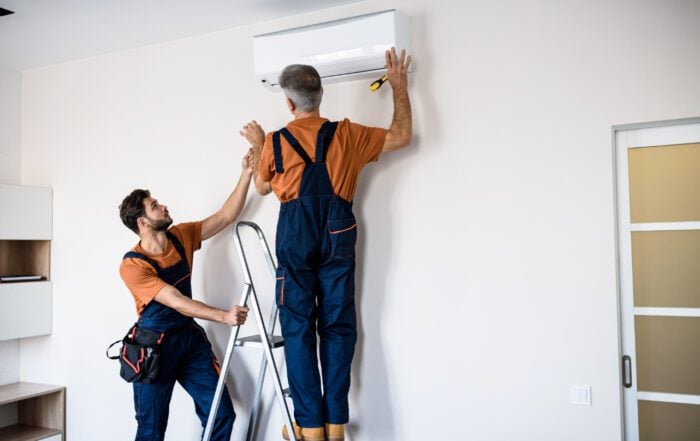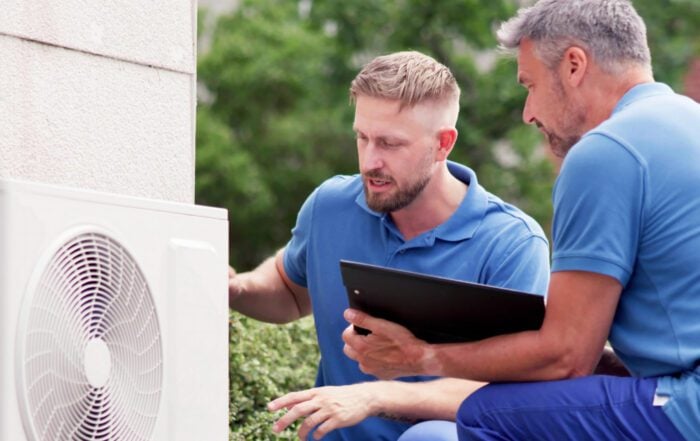Colorless, odorless, tasteless, and deadly, carbon monoxide (CO) can pose a grave risk to you and your family if you are not aware of how it can be released in your home and how to use CO detectors to reduce your risk. You can’t see or smell it in the air, yet even at low doses, it is dangerous and potentially fatal.
If you are exposed to enough CO, your bloodstream can fill with the molecules and take the place of oxygen molecules. You start to get less oxygen to your body and your brain. Symptoms include headaches, dizziness, nausea, fatigue, and confusion. High CO levels can result in unconsciousness or death.
A combustion reaction where oxygen is insufficient will create carbon monoxide. Instead of producing carbon dioxide molecules (with two oxygen atoms), it produces CO (with a single oxygen atom).
Some potential sources of CO are idling cars, barbecues, open wood fires, and faulty domestic heating systems. While many people are aware of the risks of CO poisoning during the winter months from faulty furnaces or space heaters, they don’t realize the danger from other sources throughout the year may be just as deadly. Barbecuing inside, for example, carries a high risk of carbon monoxide poisoning; this is a risk whenever fuel burns in an enclosed area where CO can build up.
The good news is that CO detection is both simple and cheap. You can place and use a detector in every risk-potential area. This could be your truck, boat, living room, or garage. These detectors will signal an alarm when carbon monoxide levels rise above a trace-amount level. This alerts you to seek fresher air and turn off the source of the CO build-up before it begins to affect your body. While cheap and simple, CO detection can save lives.
How to Protect Yourself
Even if you only use your fuel-burning appliances in good conditions, it’s still possible to be in danger from CO. Leaks can occur into your home from the chimney or even your neighbors home depending on your home’s layout. In these cases, you need to protect yourself with CO alarms.
CO alarms are inexpensive and can often just be plugged into the wall. They constantly monitor the CO content in the surrounding air and will sound an alarm if they increase to potentially dangerous levels. You should place at least one per level of your home and test them regularly.
If your alarm sounds, immediately leave your home and find a place with fresh air. Call the fire department who will go in and check for any pontential issues. A false alarm is better than the alternative.
CO detectors act much like a smoke alarm. They alert occupants when CO levels are too high by issuing a warning before the onset of any symptoms. Of course, the more accurate the CO alarm, the greater chance a household will react appropriately.
Here are three essential factors to look for when shopping for a CO detector:
- Electrochemical sensor. Because Northeast Ohio has frequent humidity and temperature changes, it’s important to choose a model with an electrochemical sensor. This sensor prevents the alarm from reacting to the changes or common household chemicals that may trigger false readings.
- End-of-life warning. Like all devices, CO detectors have a lifespan, and it’s important to know when the alarm needs to be replaced. These signals will alert you, so you don’t go unprotected.
- UL or CSA listed. CO detectors should adhere to the stringent independent third-party guidelines established by Underwriters Laboratories (UL) or Canadian Standards Association (CSA). Greater Cleveland homeowners should check for a UL Listed label on any CO detector before purchase.
Installation Guidelines
Installing a CO detector could prevent someone in your household from becoming one of the over 400 deaths annually in the United States caused by carbon monoxide poisoning. Thousands more end up in emergency rooms and require serious medical treatment.
Because carbon monoxide gas is not noticeable to human senses, many people never realize it’s affecting them until it’s too late. A large number of fatalities are individuals who die in their sleep, unaware they have a house filling with deadly gas.
Guidelines for Detectors
A CO detector installed correctly and tested regularly can provide an early warning which your natural senses cannot. Here are some guidelines for installation and use:
- Install at least one carbon monoxide detector on each level of the home. One should be located outside each bedroom in the hallway.
- Since carbon monoxide gas rises, the optimum location for the detector is on a wall, four to six inches below the ceiling.
- Install CO detectors a minimum of 15 feet away from any cooking or heating appliances. These can produce false readings.
- Ensure the unit is unobstructed and uncovered.
- Test the detector once a month. To do this, press the “test” button on the face of the unit and hold it down until you hear the alarm sound, then release the button. If the alarm doesn’t sound, replace the detector immediately.
- Replace the batteries in a battery-powered unit every six months. Be aware that even AC-powered detectors that plug into a wall outlet incorporate batteries as a backup. Most of these units will sound a “chirp” alert to warn you that the batteries require a replacement.
- If the alarm sounds, get everyone out of the house immediately. Don’t waste time investigating possible causes yourself. Once everyone is safely out of the house, call the fire department from a cell phone outdoors or ask a neighbor to call. Do not re-enter the house.
- Even if the unit has an end-of-life warning, you should replace CO detectors every seven years to benefit from the newest technology updates.
Common Carbon Monoxide Hazards
Since even a small amount of CO is dangerous, essentially any appliance that burns fuel (gas, coal, etc.) can produce CO including:
- Generators
- Fuel-burning power tools
- Cars
- Wood stoves
- Barbecue grills
- Heaters
- Fireplaces
To minimize CO production, only use these appliances in highly ventilated areas – outside if possible. As long as you are in an open space, carbon monoxide won’t accumulate.
You should also have all of these appliances professionally inspected annually. It’ll help you find any functional problems before they become too dangerous.
Leave It to the Professionals
Carbon monoxide poisoning is the primary cause of accidental poisoning in the United States. If you find a carbon monoxide leak in your home, have a professional check the following areas:
- Furnace – Oil- and gas-burning furnaces are often the culprits in carbon monoxide leaks. A professional will measure the carbon monoxide emitting in flue gases. They will also check the venting systems and connections for leaks from cracks, bad connections or damage. Additionally, they’ll scan the filtration system for damages and blockages. Finally, the heat exchanger and combustion chamber will be thoroughly examined for any signs of weakness, cracks or corrosion.
- Chimneys – Chimneys must be thoroughly checked to ensure they are free of debris and other blockages. Animals will often use stacks as shelter, resulting in nests that can prevent proper ventilation and gases backing up into the home.
- Appliances – All major appliances that burn gas will be checked to ensure they are ventilated properly. It is important to check all appliances that burn oil or natural gas including space heaters.
- Fireplaces – Fireplaces must be evaluated to determine if there are any holes or blockages in the ventilation system. If you don’t ventilate your fireplace properly, gas can funnel back into the home.
- Pilot Lights – Pilot lights on appliances such as stoves, furnaces and water heaters should be checked to make sure they are operating properly.
For additional information on proper detector installation and how to check your home for carbon monoxide leaks, contact Stack Heating & Cooling.
Have Any Questions?
If this is an emergency please call 440-937-9134.
Otherwise, please feel free to call us or submit this form to schedule an appointment for service or request an estimate. We will contact you shortly!



